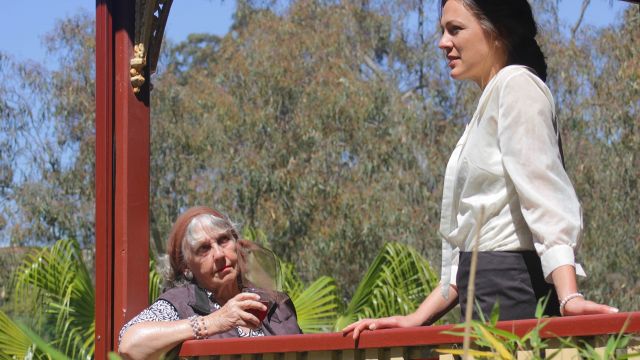The Lover
Lawrence Strangio, an always interesting, original and risk-taking director, has taken the bold step of adapting Marguerite Duras’ novella/memoir The Lover – and in an original and risk-taking way.
The memoir was a scandal when published in 1984 and might be a minor scandal now, given the times. It was written more than fifty years after the events described and it tells of an affair between a white fifteen-year-old schoolgirl and a twenty-seven-year-old Chinese businessman. The details can be shamelessly specific. The context is French colonial Indo-China (Vietnam), but Duras’ French family live in poverty, the girl is bored and grows into a sort of naïve cynicism. The ambiguous seduction begins as an experiment that develops into manipulation and erotic power.
Is The Lover really a ‘memoir’? That is, is it genuine autobiography? Is it ‘true’ – or as true as autobiography ever is? I don’t think it matters. Is it true to life? That’s the question. It feels as if it is – and uncomfortably so. Indeed, the very idea of ‘true’ is deliberately questioned. Scandal or not, it’s literature not smut, the book is still in print, has sold over a million copies and been translated, apparently, into forty-three languages. The fascination is not so much with the eroticism, but more with the way a naïve then knowing schoolgirl experiences it.
Mr Strangio plays the story out via a dialogue between just two performers, remembering or reconstructing key past events. One actor, Brenda Palmer, represents the old Duras – around seventy, the age at which Duras wrote her book – and Annie Thorold is the younger self, maybe thirty – that is, not the child who experienced the events of the story but an older self who remembers the events the child experienced.
If the mode of storytelling chosen by Mr Strangio seems potentially confusing, it is nevertheless a legitimate ‘take’ on the book – and it is Duras’ characteristic way – complex and contradictory, mixing time frames, switching from first person ‘I’ to third person ‘she’ from one sentence to the next, eschewing ‘narrative’ per se, at times detached, at others engaged by past emotions – or by emotions aroused by memory.
The risks inherent in this enterprise and the demands this mode of telling the story makes on Ms Palmer and Ms Thorold should be clear. Interpretation of the story, its meaning – or meanings, since memory is selective, ambivalent and ambiguous – depends on the actors’ responses to the words each speaks and the words spoken by the other. The older Duras (pronounced ‘Dur-ass’ with the ‘s’), worn and careless, greets the younger joyfully and pours her a glass of wine. The older Duras remembers details and sometimes remembers them with complete candour or something like glee – as if time has softened the pain, but sharpened the realisation that in that long-ago affair, she had the power – but she drinks heavily throughout and we may remember Duras was an alcoholic. The younger Duras is beautiful, sophisticated, if rueful, has left Indo-China, received an education and moves in avant-garde literary and filmmaking milieux. Her emphasis is more on what she felt rather than events themselves – for instance, guilt, distaste, and anger with her desperate widowed mother – who more or less connived at the affair – still lingers, but she can also still revel in sensual memories of her erotic encounters with her lover. These two selves converse, contradicting and correcting, but inwardly, as it were; they do not clash in dramatic conflict – and don’t see why they can’t. After their very first meeting, when the younger joins the older on stage, there is little or no interaction.
But Mr Strangio goes further. The audience is seated at tables that surround the central playing area as if the show is a cabaret – and it’s certainly not a cabaret. The lights are only dimmed so the two women play their parts in the same light as the audience – which somehow reduces them and their story. They are constantly on the move, across the stage, around the audience, behind the audience… The motivation for these moves – clearly intended as further response and interpretation of the story – is not often clear. With the notorious acoustics of the La Mama Courthouse, Ms Thorold’s utter, touching sincerity is at times inaudible, worse when her back is turned, and worst when she walks about in leather sole high heels.
The story qua story, told in allusive, elliptical sentences, and with startling insight, is compelling. You won’t fall asleep, but you may be frustrated. Even after I had grasped Mr Strangio’s intention, I remember having the impertinent thought, ‘I wouldn’t do it this way…’ But I suspect that with some tweaking, more high key lighting, a change of footwear and a little more voice projection, The Lover will snap into clarity. Better something original and brave than predictable cliché.
Michael Brindley
Subscribe to our E-Newsletter, buy our latest print edition or find a Performing Arts book at Book Nook.

